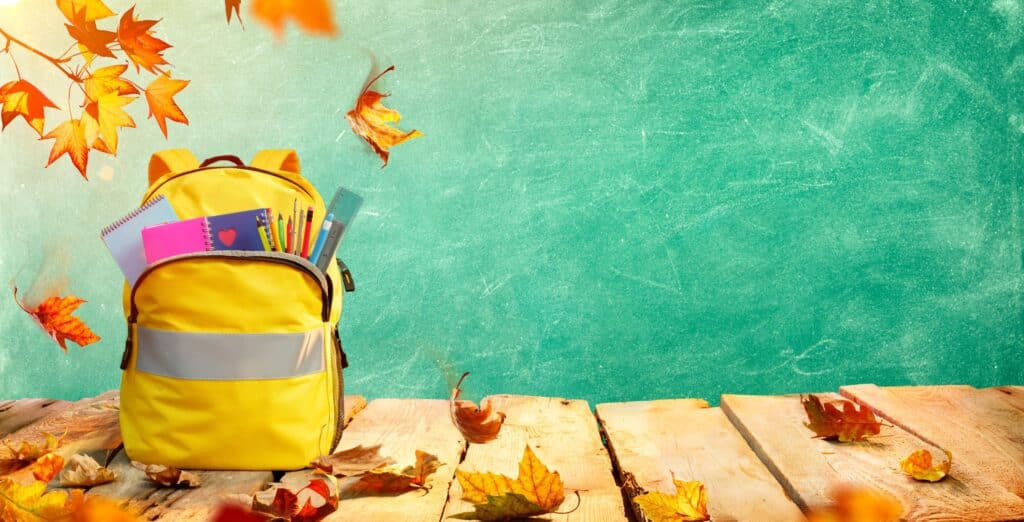Navigating the shift from a languid summer to the energetic hum of a new school year can be a challenge. But as the air cools and leaves begin to turn, a unique opportunity presents itself: leveraging the magic of the fall season to re-engage students and enrich the curriculum.
The scent of spiced cider, the crunch of fallen leaves, and the vibrant palette of oranges and reds—these aren’t just sensory details; they are entry points for dynamic, cross-curricular learning experiences. As educators, we can channel this natural excitement into meaningful lessons that go beyond the textbook.
Here are five fall-themed classroom activities designed to spark curiosity, foster collaboration, and bring the spirit of autumn directly into your students’ learning journey.
The Great Pumpkin STEM Challenge: From Observation to Innovation
Why it works: Pumpkins are a quintessential symbol of fall and an ideal medium for hands-on, inquiry-based STEM (Science, Technology, Engineering, and Mathematics) activities. This project transforms a simple pumpkin into a multi-faceted learning tool, encouraging students to think like scientists and engineers.
The activity:
- Science: Begin with a Pumpkin Observation Lab. Students use their five senses (sight, touch, smell, hearing, and a descriptive sense of taste for pumpkin-flavored items) to describe and measure their pumpkins. They can estimate and then measure the circumference, height, and weight.
For older students, this can extend to estimating the number of seeds inside and then counting them, leading to discussions about estimation, data collection, and probability. For detailed lesson plans and ideas, explore pumpkin STEM activities from Scholastic.
- Technology: Utilize digital tools. Students can use tablets or phones to take photos and create a digital log of their observations. They can also use spreadsheets to organize their measurement data and create simple graphs, practicing data visualization skills.
- Engineering: This is the core of the challenge. Present a problem: “How can we create a structure that safely lifts our pumpkin off the ground using only recycled materials?” or “Design a ‘pumpkin launcher’ that can propel a small pumpkin the furthest.” This task encourages students to brainstorm, design, build, test, and refine their prototypes.
- Mathematics: Every step involves math. From calculating the density of the pumpkin to converting measurements between different units (e.g., inches to centimeters), the mathematical applications are endless.
Key takeaway: This activity seamlessly integrates multiple disciplines, showing students how STEM concepts are interconnected and applicable to real-world problems.
Autumnal Poetry and Prose: A Language Arts Leaf Pile
Why it works: Fall is a season of change, perfect for inspiring creative expression. The vivid imagery and sensory details of autumn provide a rich wellspring for students to draw upon for their writing.
The activity:
- Sensory Walk: Take students on a walk around the schoolyard or a nearby park. Have them collect fallen leaves, acorns, and small twigs. Encourage them to actively listen for sounds, feel the texture of bark, and observe the color variations in the foliage.
- Show, Don’t Tell: Back in the classroom, use these collected items as writing prompts. Challenge students to write poems or short stories that “show” the season’s change rather than just “telling” it. For example, instead of writing “The leaves are falling,” they could write, “A crimson leaf danced on the wind before settling softly on the grass.”
- Alliterative and Figurative Language: Introduce and practice literary devices such as alliteration (e.g., “crisp, crunchy, coppery leaves”) and metaphors (e.g., “The tree is an ancient wizard in a robe of gold”).
- Published Author Project: Have students “publish” their work by creating a class anthology of fall writings. They can illustrate their pieces, and the finished book can be displayed in the classroom or school library, giving them a sense of pride and accomplishment.
Key takeaway: This activity connects direct observation with creative writing, helping students develop stronger descriptive skills and a deeper appreciation for the power of language.
The Fall Harvest Feast: A Cultural and Culinary Exploration
Why it works: Food is a powerful connection to culture, history, and community. A fall harvest theme allows for a multi-disciplinary study of agriculture, history, and different cultural traditions.
The activity:
- History & Social Studies: Research the history of harvest festivals in different cultures around the world. Students can explore traditions like Thanksgiving in North America, Mid-Autumn Festival in East Asia, or Sukkot in Judaism. Discuss the historical significance of these celebrations and the importance of community and gratitude. For a comprehensive lesson plan on global fall celebrations, check out this resource from FRESHFARM.
- Geography: Map out where different fall crops are grown. Students can research the climate and soil conditions required for pumpkins, apples, corn, and other seasonal produce.
- Nutrition & Science: Discuss the nutritional value of fall foods. Conduct a simple science experiment to explore the life cycle of a pumpkin or an apple. You could even explore the science behind how corn is popped.
- The Classroom Feast: Conclude the unit with a class “harvest feast.” This can be a potluck where students and families contribute dishes representing different cultures or simply a shared meal with healthy, fall-themed snacks like apple slices, roasted pumpkin seeds, or corn bread.
Key takeaway: This project goes beyond the textbook to create a memorable experience that highlights cultural diversity and the interconnectedness of food, history, and geography.
Leaf Rubbing and Classification: A Natural Art and Science Fusion
Why it works: This classic activity is simple, effective, and combines scientific observation with artistic expression, making it perfect for a wide range of grade levels.
The activity:
- Field Collection: Students collect a variety of leaves from different trees. Encourage them to find leaves that are well-preserved and have distinct veins.
- Artistic Creation: Place a leaf under a thin piece of paper and use the side of a crayon to create a rubbing. The result is a beautiful, detailed impression of the leaf’s structure.
- Science Integration: This is where the learning deepens. Using their leaf rubbings, students can use resources like Science Buddies to find the hidden colors of leaves. They can also:
- Classify: Use a field guide or online resources to identify the tree species each leaf came from. Teach them how to classify leaves based on shape (e.g., lobed, simple), venation (e.g., palmate, pinnate), and margin (e.g., smooth, serrated).
- Anatomy: Discuss the parts of a leaf (e.g., petiole, blade, veins) and their function in photosynthesis.
- Journaling: Create a nature journal. Students can mount their leaf rubbings and write detailed descriptions of the leaves, the trees they came from, and their observations about the fall season.
Key takeaway: This low-cost, high-impact activity reinforces key scientific concepts (biology, botany, classification) while also providing an outlet for artistic creativity.
Fall Colors and Concoctions: An Exploration of Chemistry and Color Theory
Why it works: The vibrant colors of fall are a result of complex chemical processes. This activity allows students to explore these scientific principles through engaging, hands-on experiments.
The activity:
- Color Theory: Begin with a discussion of primary and secondary colors. Connect this to the colors seen in nature.
- Chromatography Experiment: This is a fantastic way to show students that the green they see in a leaf is actually a mix of other colors. This experiment from Little Bins for Little Hands provides a simple guide.
- Materials: Rubbing alcohol, coffee filters, a glass jar, and green leaves.
- Process: Mash up a green leaf and put it in a small amount of rubbing alcohol in the jar. Hang a strip of coffee filter paper so its bottom edge is just touching the alcohol. As the alcohol travels up the paper, it will separate the pigments, revealing the yellow, orange, and red colors that were hidden beneath the dominant green chlorophyll.
- Discussion: Explain the science behind the colors of fall. Discuss chlorophyll and how its breakdown as temperatures cool and sunlight wanes allows other pigments (carotenoids and anthocyanins) to become visible, creating the spectacular autumn display.
Key takeaway: This simple yet profound experiment makes abstract scientific concepts tangible, demonstrating the fascinating chemistry that underlies the beauty of the natural world.
Final Thoughts on Classroom Fall Activities
By embracing the season, we not only make learning more memorable but also create a vibrant, engaging classroom community that thrives on exploration and discovery. So, this fall, let’s step outside the classroom walls and bring the rich, colorful world of autumn directly to our students.
You’ve got important career goals — we have the graduate program to get you there. Check out our available graduate degree programs to advance your career today!




